Earlier this month while visiting rose friend in NorCal, they showed me a variegated sport on one of their roses.
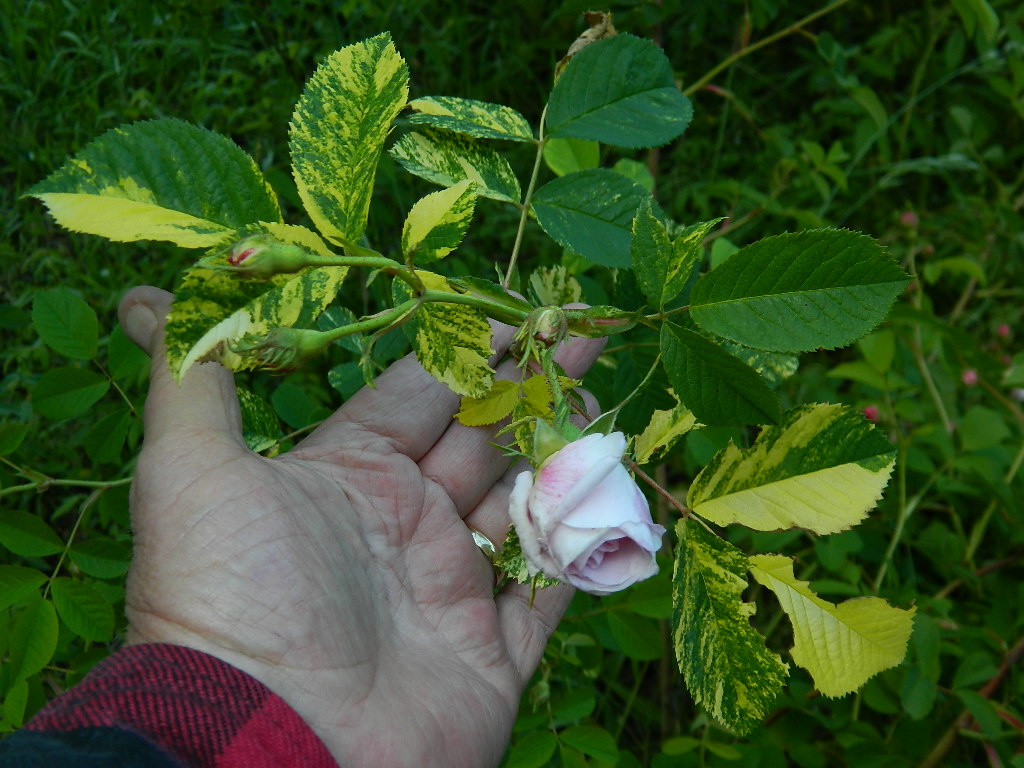
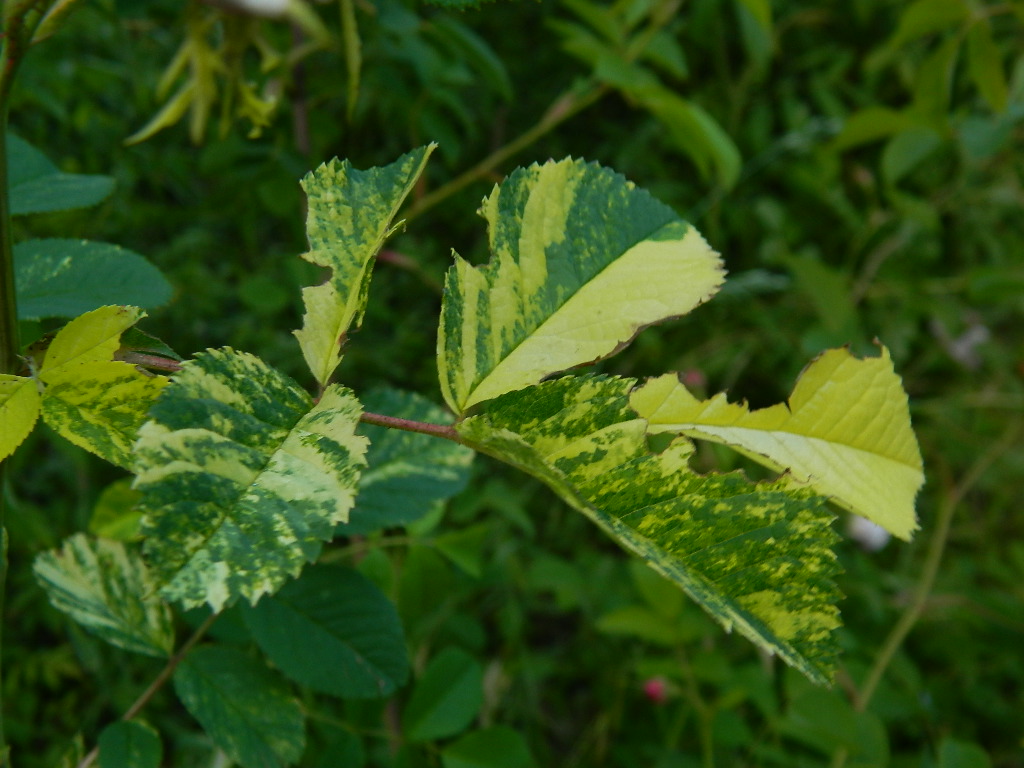
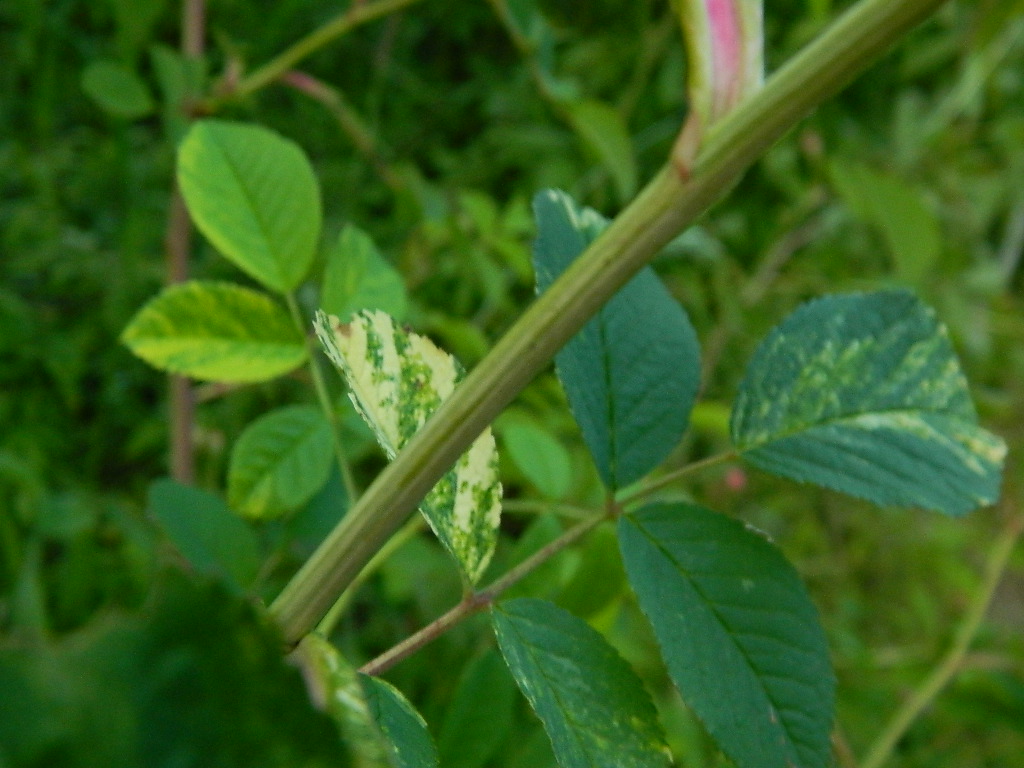
That rose of your friend’s Kim is very beautiful!
Kim, how does your friend know that the rose is not virused?
Attached is a photo of a small plant with variegation. How to tell if this is a virus?
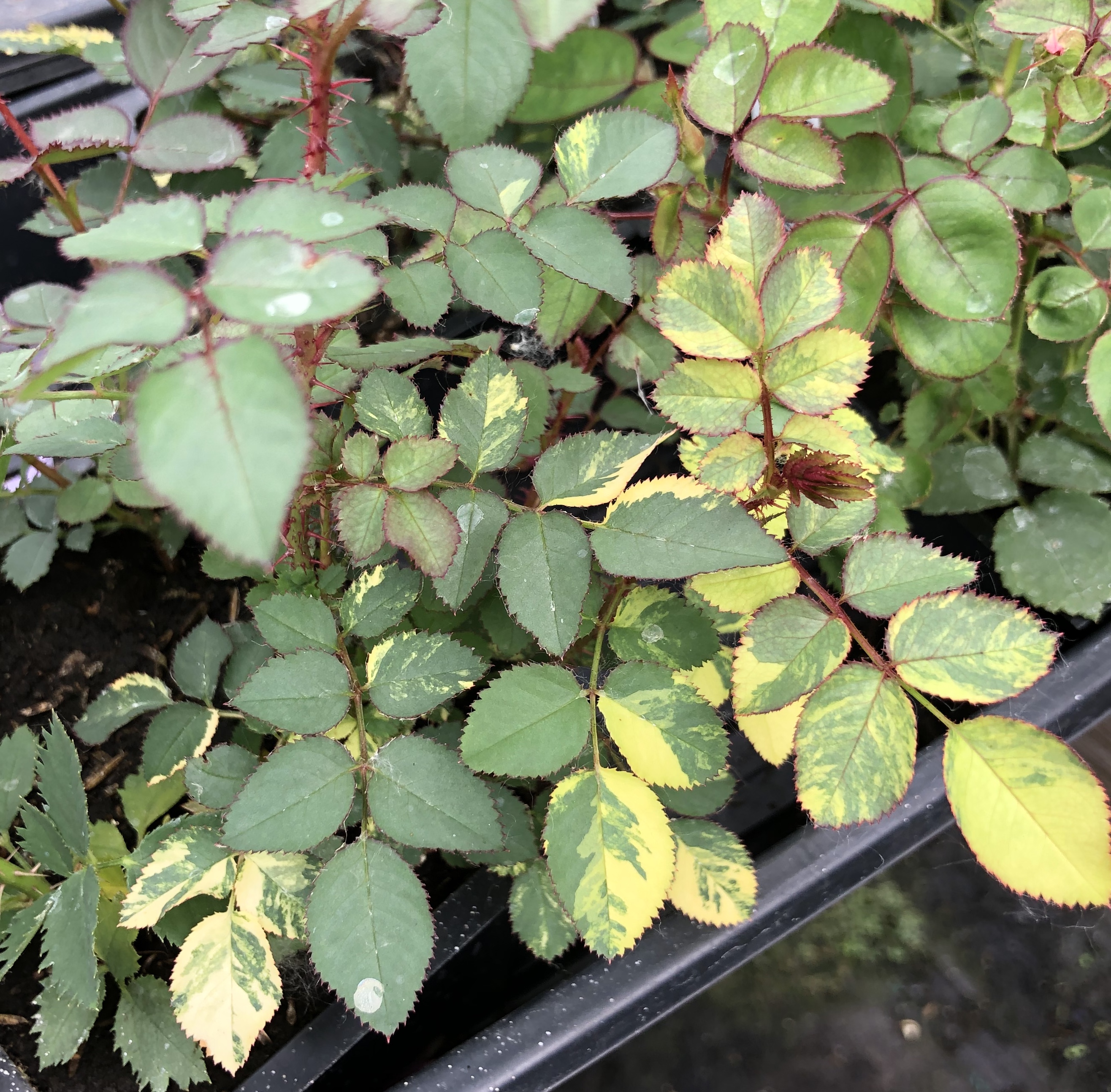
The variegation runs through the CANES as well as the foliage. I’m waiting for an email to tell me the identity and age of the plant.
An email has arrived, identifying the variegated plant as Chloris, a plant received from Barbara Worl, the lady who discovered Grandmother’s Hat and brought it to the world’s attention. She shared the plant with them in 1989. This is the first anomaly it has expressed in all the time it’s grown in the garden.
Dumb question, but if it’s a seedling from parents that don’t present similar signs of “virus” and if the seedling has never been grafted, isn’t the probability of such ridiculously slim? If it were a virus, is it conceivable that the carrier for the virus would not have exhibited such extreme variegation as to be noticed as well?
I was actually going to pose the question as to whether the origin of the variegation was obligatorily a concern, but then did a little research and learned that the virus that caused e.g. the striping in tulips a couple centuries ago was in fact ultimately fatal to the plants. I hadn’t recalled that it actually killed the striped cultivars expressing the virus’ traits.
If it is an aphid spread virus, it appears that the probability is significant.
Kim,
Very cool. Do you know whether or not the flowers on that cane were also expressing variegation?
They don’t appear to, Rob. The buds were pale pink as the flowers normally are. If the petals had also demonstrated variegation, I’m positive it would have been mentioned. Both of them are pure “plant geeks” while one is far more focused on roses. But both are incredibly observant and possess knowledge I can only aspire to! A very neat occurrence they pointed out during the visit was this sporting of Autumn Damask to Quatre Saisons Blanc Mousseux on the same cane. That was fun! I had never seen it before.
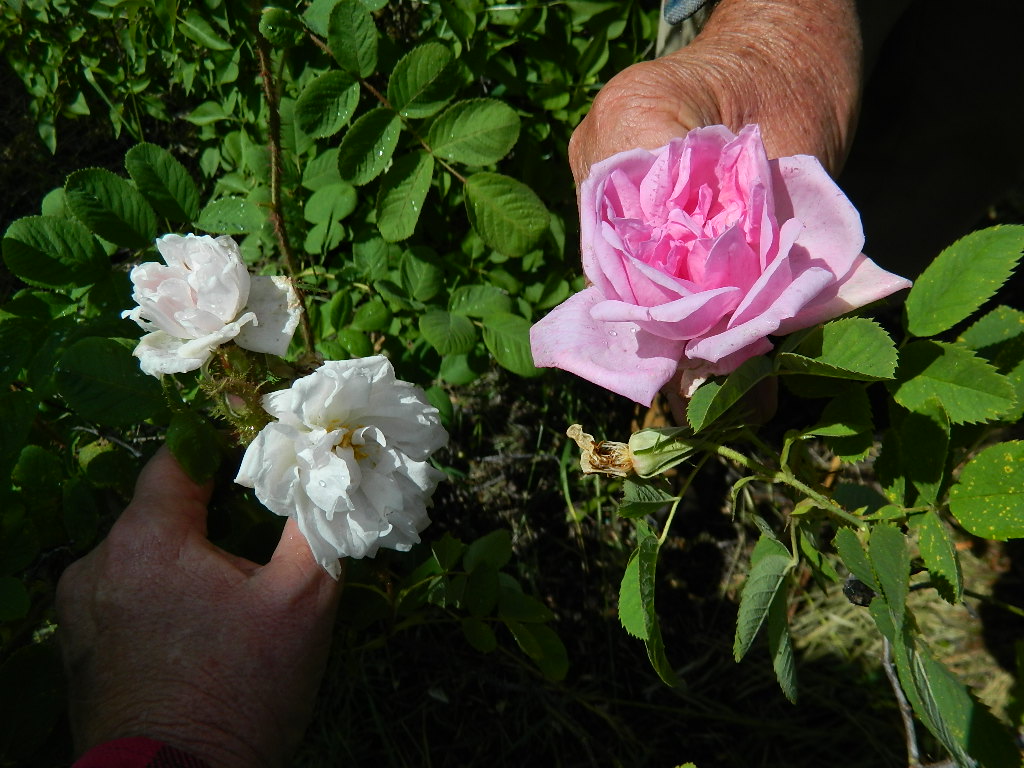
I was just curious and thanks Kim!
It was a good question! Thank you and you’re welcome!
Is this seedling yours? It’s incredible! I’d love to perhaps get a cutting if it’s a stable sport down the line?
I’ve planted it in the field and we’ll see how it grows. The problem is that winter dieback may kill the variegated branch.
Variegation from viral infection has a random expression, with little relation to leaf venation, as opposed to genetic variegation, which tends to follow veins, ribs, etc., per folks who know more than me. A plant pathologist can make an educated guess from a photo and UC Davis, Washington State University and other plant clinics offer plant sample diagnostic services for confirmation. I’ve posted a now-tested disease-free variegated rugosa in the past and as a seed parent, it passes variegation to a small percentage of seedlings, only from canes showing variegation, so Stefen’s hypothosis reflects my experience. Canes from runners are invariably green. Talking to Star Roses, public perception of variegation in roses might be a problem, as some would assume disease.
Any updates on them? C:
Sorry to disappoint…mine was planted in the field and grew somewhat but didn’t do much. I expect the variegation to be gone in the spring. Check back next July!